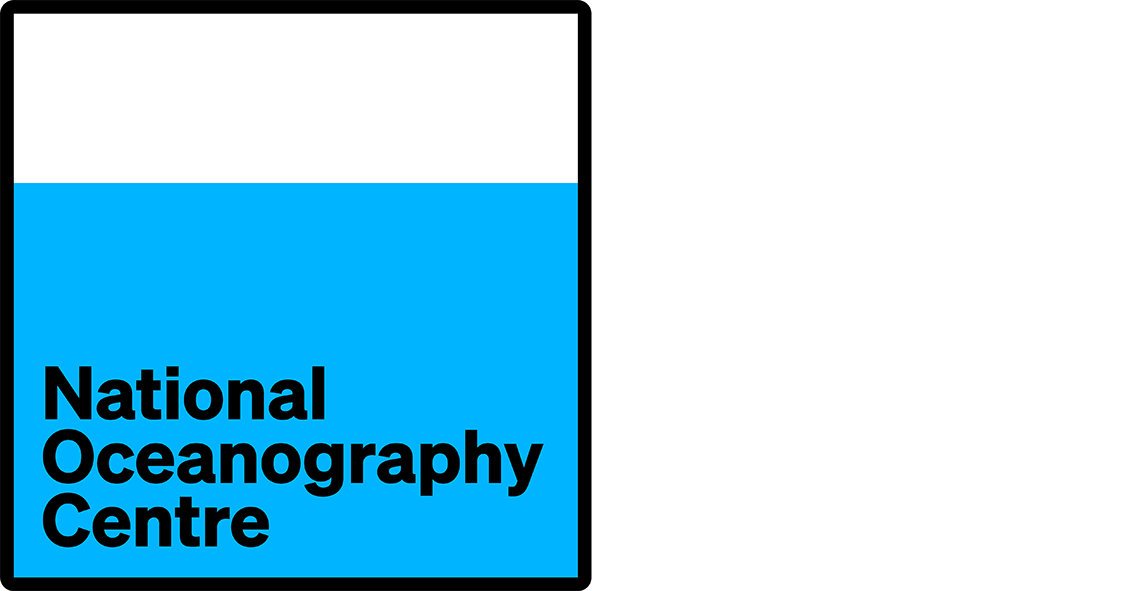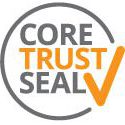Metadata Report for BODC Series Reference Number 1262556
Metadata Summary
Problem Reports
Data Access Policy
Narrative Documents
Project Information
Data Activity or Cruise Information
Fixed Station Information
BODC Quality Flags
SeaDataNet Quality Flags
Metadata Summary
Data Description |
|||||||||||||||||||||||||||||
|
|||||||||||||||||||||||||||||
Data Identifiers |
|||||||||||||||||||||||||||||
|
|||||||||||||||||||||||||||||
Time Co-ordinates(UT) |
|||||||||||||||||||||||||||||
|
|||||||||||||||||||||||||||||
Spatial Co-ordinates | |||||||||||||||||||||||||||||
|
|||||||||||||||||||||||||||||
Parameters |
|||||||||||||||||||||||||||||
|
|||||||||||||||||||||||||||||
Definition of BOTTFLAG | |||||||||||||||||||||||||||||
| BOTTFLAG | Definition |
|---|---|
| 0 | The sampling event occurred without any incident being reported to BODC. |
| 1 | The filter in an in-situ sampling pump physically ruptured during sample resulting in an unquantifiable loss of sampled material. |
| 2 | Analytical evidence (e.g. surface water salinity measured on a sample collected at depth) indicates that the water sample has been contaminated by water from depths other than the depths of sampling. |
| 3 | The feedback indicator on the deck unit reported that the bottle closure command had failed. General Oceanics deck units used on NERC vessels in the 80s and 90s were renowned for reporting misfires when the bottle had been closed. This flag is also suitable for when a trigger command is mistakenly sent to a bottle that has previously been fired. |
| 4 | During the sampling deployment the bottle was fired in an order other than incrementing rosette position. Indicative of the potential for errors in the assignment of bottle firing depth, especially with General Oceanics rosettes. |
| 5 | Water was reported to be escaping from the bottle as the rosette was being recovered. |
| 6 | The bottle seals were observed to be incorrectly seated and the bottle was only part full of water on recovery. |
| 7 | Either the bottle was found to contain no sample on recovery or there was no bottle fitted to the rosette position fired (but SBE35 record may exist). |
| 8 | There is reason to doubt the accuracy of the sampling depth associated with the sample. |
| 9 | The bottle air vent had not been closed prior to deployment giving rise to a risk of sample contamination through leakage. |
Definition of Rank |
|
|
Problem Reports
No Problem Report Found in the Database
Data Access Policy
Open Data
These data have no specific confidentiality restrictions for users. However, users must acknowledge data sources as it is not ethical to publish data without proper attribution. Any publication or other output resulting from usage of the data should include an acknowledgment.
If the Information Provider does not provide a specific attribution statement, or if you are using Information from several Information Providers and multiple attributions are not practical in your product or application, you may consider using the following:
"Contains public sector information licensed under the Open Government Licence v1.0."
Narrative Documents
Niskin Bottle
The Niskin bottle is a device used by oceanographers to collect subsurface seawater samples. It is a plastic bottle with caps and rubber seals at each end and is deployed with the caps held open, allowing free-flushing of the bottle as it moves through the water column.
Standard Niskin
The standard version of the bottle includes a plastic-coated metal spring or elastic cord running through the interior of the bottle that joins the two caps, and the caps are held open against the spring by plastic lanyards. When the bottle reaches the desired depth the lanyards are released by a pressure-actuated switch, command signal or messenger weight and the caps are forced shut and sealed, trapping the seawater sample.
Lever Action Niskin
The Lever Action Niskin Bottle differs from the standard version, in that the caps are held open during deployment by externally mounted stainless steel springs rather than an internal spring or cord. Lever Action Niskins are recommended for applications where a completely clear sample chamber is critical or for use in deep cold water.
Clean Sampling
A modified version of the standard Niskin bottle has been developed for clean sampling. This is teflon-coated and uses a latex cord to close the caps rather than a metal spring. The clean version of the Levered Action Niskin bottle is also teflon-coated and uses epoxy covered springs in place of the stainless steel springs. These bottles are specifically designed to minimise metal contamination when sampling trace metals.
Deployment
Bottles may be deployed singly clamped to a wire or in groups of up to 48 on a rosette. Standard bottles and Lever Action bottles have a capacity between 1.7 and 30 L. Reversing thermometers may be attached to a spring-loaded disk that rotates through 180° on bottle closure.
D223A Discrete CTD Inorganic Nutrient Sampling Document
Originator's Protocol for Data Acquisition and Analysis
Sample collection and analysis
Duplicate discrete dissolved inorganic nutrient samples were collected from Niskin bottles fired on many of the CTD casts performed during the cruise. Clean plastic diluvial containers were rinsed three times with water from the Niskin bottle prior to being filled. One duplicate sample was stored in the refrigerator and analysed within 12 hours of sampling, the other sample stored in the ship's cold room (at 5 °C). Concentrations of silicate, nitrate/nitrite and phosphate were determined by segmented flow analysis using a Chemlab Autoanalyser. Analysis was performed in duplicate to ensure accuracy and enable greater precision. Sensor drift was also monitored at intervals throughout the process.
Primary standards were prepared in calibrated 500 ml glass volumetric flasks (calibrated polyethylene volumetric flasks for silicate), approximately every four weeks. These utilised pre-weighed salts prepared in the lead up to the cruise. Sets of working standards were typically made up from these on a daily basis in 100 ml calibrated polyethylene volumetric flasks in artificial seawater (40 g/l NaCl).
Analytical equipment functioned satisfactorily throughout the cruise. The tubing on the peristaltic pump being replaced as a precaution approximately every two weeks.
BODC Data Processing Procedures
PSTAR-formatted CTD sample data from this cruise were supplied to BODC during March 1998. The inorganic nutrient data were extracted from these files and loaded into BODC's Oracle database. Flags were assigned if values were considered suspect.
Content of data series
| Originator's Parameter | Unit | Description | BODC Parameter code | BODC Unit | Comments |
|---|---|---|---|---|---|
| SiO3 | µmol/l | Concentration of silicate per unit volume of the water body [dissolved plus reactive particulate phase] by colorimetric autoanalysis | SLCAAATX | µmol/l | No unit conversion necessary |
| NO2+NO3 | µmol/l | Concentration of nitrate+nitrite {NO3+NO2} per unit volume of the water body [dissolved plus reactive particulate phase] by colorimetric autoanalysis | NTRZAATX | µmol/l | No unit conversion necessary |
| PO4 | µmol/l | Concentration of phosphate per unit volume of the water body [dissolved plus reactive particulate phase] by colorimetric autoanalysis | PHOSAATX | µmol/l | No unit conversion necessary |
References
Leach, H., Pollard, R. T., (1998). RRS Discovery Cruise 223, 28 SEP - 19 NOV 1996. VIVALDI '96. Cruise Report No. 17 Southampton Oceanography Centre.
Project Information
World Ocean Circulation Experiment (WOCE)
The World Ocean Circulation Experiment (WOCE) was a major international experiment which made measurements and undertook modelling studies of the deep oceans in order to provide a much improved understanding of the role of ocean circulation in changing and ameliorating the Earth's climate.
WOCE had two major goals:
-
Goal 1. To develop models to predict climate and to collect the data necessary to test them.
-
Goal 2. To determine the representativeness of the Goal 1 observations and to deduce cost effective means of determining long-term changes in ocean circulation.
UK WOCE
The UK made a substantial contribution to the international World Ocean Circulation Experiment (WOCE) project by focusing on two important regions:
- Southern Ocean - links all the worlds oceans, controlling global climate.
- North Atlantic - directly affects the climate of Europe.
A major part of the UK effort was in the Southern Ocean and work included:
- Two surveys, in the South Atlantic as part of the WOCE Hydrographic Programme.
- SWINDEX, a year long study of the Antarctic Circumpolar Current (ACC) where it crosses major topography south of Africa.
- ADOX, a study of deep water flow from the Atlantic to the Indian Ocean.
- ACCLAIM, a study of the ACC by altimetry and island measurements.
In the North Atlantic the UK undertook:
- NATRE, a purposeful tracer experiment to look at cross isopycnic processes.
- CONVEX, a study of the deep ocean circulation and its changes.
- VIVALDI, a seven year programme of seasonally repeated surveys to study the upper ocean.
- Long-term observations of ocean climate in the North West Approaches.
Satellite ocean surface topography, temperature and wind data were merged with in situ observations and models to create a complete description of ocean circulation, eddy motion and the way the ocean is driven by the atmosphere.
The surveys were forerunners to the international Global Ocean Observing System (GOOS). GOOS was later established to monitor annual to decadal changes in ocean circulation and heat storage which are vital in the prediction of climate change.
Data Activity or Cruise Information
Data Activity
| Start Date (yyyy-mm-dd) | 1996-10-29 |
| End Date (yyyy-mm-dd) | 1996-10-29 |
| Organization Undertaking Activity | Southampton Oceanography Centre (now National Oceanography Centre, Southampton) |
| Country of Organization | United Kingdom |
| Originator's Data Activity Identifier | D223B_CTD_CTD13002 |
| Platform Category | lowered unmanned submersible |
BODC Sample Metadata Report for D223B_CTD_CTD13002
| Sample reference number | Nominal collection volume(l) | Bottle rosette position | Bottle firing sequence number | Minimum pressure sampled (dbar) | Maximum pressure sampled (dbar) | Depth of sampling point (m) | Bottle type | Sample quality flag | Bottle reference | Comments |
|---|---|---|---|---|---|---|---|---|---|---|
| 96686 | 10.00 | 3208.60 | 3210.10 | 3154.50 | Niskin bottle | No problem reported | ||||
| 96687 | 10.00 | 3135.00 | 3136.50 | 3082.60 | Niskin bottle | No problem reported | ||||
| 96688 | 10.00 | 3034.50 | 3036.00 | 2984.50 | Niskin bottle | No problem reported | ||||
| 96689 | 10.00 | 2932.90 | 2934.40 | 2885.20 | Niskin bottle | No problem reported | ||||
| 96690 | 10.00 | 2831.10 | 2832.60 | 2785.70 | Niskin bottle | No problem reported | ||||
| 96691 | 10.00 | 2730.10 | 2731.60 | 2687.00 | Niskin bottle | No problem reported | ||||
| 96692 | 10.00 | 2629.30 | 2630.80 | 2588.30 | Niskin bottle | No problem reported | ||||
| 96693 | 10.00 | 2528.70 | 2530.20 | 2489.90 | Niskin bottle | No problem reported | ||||
| 96694 | 10.00 | 2273.20 | 2274.70 | 2239.60 | Niskin bottle | No problem reported | ||||
| 96695 | 10.00 | 2017.80 | 2019.30 | 1989.10 | Niskin bottle | No problem reported | ||||
| 96696 | 10.00 | 1765.10 | 1766.60 | 1741.00 | Niskin bottle | No problem reported | ||||
| 96697 | 10.00 | 1511.80 | 1513.30 | 1492.00 | Niskin bottle | No problem reported | ||||
| 96698 | 10.00 | 1258.20 | 1259.70 | 1242.40 | Niskin bottle | No problem reported | ||||
| 96699 | 10.00 | 1008.20 | 1009.70 | 996.00 | Niskin bottle | No problem reported | ||||
| 96700 | 10.00 | 808.70 | 810.20 | 799.20 | Niskin bottle | No problem reported | ||||
| 96701 | 10.00 | 607.80 | 609.30 | 600.90 | Niskin bottle | No problem reported | ||||
| 96702 | 10.00 | 406.90 | 408.40 | 402.30 | Niskin bottle | No problem reported | ||||
| 96703 | 10.00 | 207.40 | 208.90 | 205.00 | Niskin bottle | No problem reported | ||||
| 96704 | 10.00 | 107.40 | 108.90 | 106.00 | Niskin bottle | No problem reported | ||||
| 96705 | 10.00 | 57.50 | 59.00 | 56.60 | Niskin bottle | No problem reported | ||||
| 96706 | 10.00 | 32.60 | 34.10 | 31.90 | Niskin bottle | No problem reported | ||||
| 96707 | 10.00 | 17.70 | 19.20 | 17.10 | Niskin bottle | No problem reported | ||||
| 96708 | 10.00 | 7.70 | 9.20 | 7.20 | Niskin bottle | No problem reported |
Please note:the supplied parameters may not have been sampled from all the bottle firings described in the table above. Cross-match the Sample Reference Number above against the SAMPRFNM value in the data file to identify the relevant metadata.
Related Data Activity activities are detailed in Appendix 1
Cruise
| Cruise Name | D223B |
| Departure Date | 1996-10-22 |
| Arrival Date | 1996-11-19 |
| Principal Scientist(s) | Raymond T Pollard (Southampton Oceanography Centre) |
| Ship | RRS Discovery |
Complete Cruise Metadata Report is available here
Fixed Station Information
No Fixed Station Information held for the Series
BODC Quality Control Flags
The following single character qualifying flags may be associated with one or more individual parameters with a data cycle:
| Flag | Description |
|---|---|
| Blank | Unqualified |
| < | Below detection limit |
| > | In excess of quoted value |
| A | Taxonomic flag for affinis (aff.) |
| B | Beginning of CTD Down/Up Cast |
| C | Taxonomic flag for confer (cf.) |
| D | Thermometric depth |
| E | End of CTD Down/Up Cast |
| G | Non-taxonomic biological characteristic uncertainty |
| H | Extrapolated value |
| I | Taxonomic flag for single species (sp.) |
| K | Improbable value - unknown quality control source |
| L | Improbable value - originator's quality control |
| M | Improbable value - BODC quality control |
| N | Null value |
| O | Improbable value - user quality control |
| P | Trace/calm |
| Q | Indeterminate |
| R | Replacement value |
| S | Estimated value |
| T | Interpolated value |
| U | Uncalibrated |
| W | Control value |
| X | Excessive difference |
SeaDataNet Quality Control Flags
The following single character qualifying flags may be associated with one or more individual parameters with a data cycle:
| Flag | Description |
|---|---|
| 0 | no quality control |
| 1 | good value |
| 2 | probably good value |
| 3 | probably bad value |
| 4 | bad value |
| 5 | changed value |
| 6 | value below detection |
| 7 | value in excess |
| 8 | interpolated value |
| 9 | missing value |
| A | value phenomenon uncertain |
| B | nominal value |
| Q | value below limit of quantification |
Appendix 1: D223B_CTD_CTD13002
Related series for this Data Activity are presented in the table below. Further information can be found by following the appropriate links.
If you are interested in these series, please be aware we offer a multiple file download service. Should your credentials be insufficient for automatic download, the service also offers a referral to our Enquiries Officer who may be able to negotiate access.
| Series Identifier | Data Category | Start date/time | Start position | Cruise |
|---|---|---|---|---|
| 1850734 | Water sample data | 1996-10-29 16:53:00 | 58.03221 N, 40.43897 W | RRS Discovery D223B |


